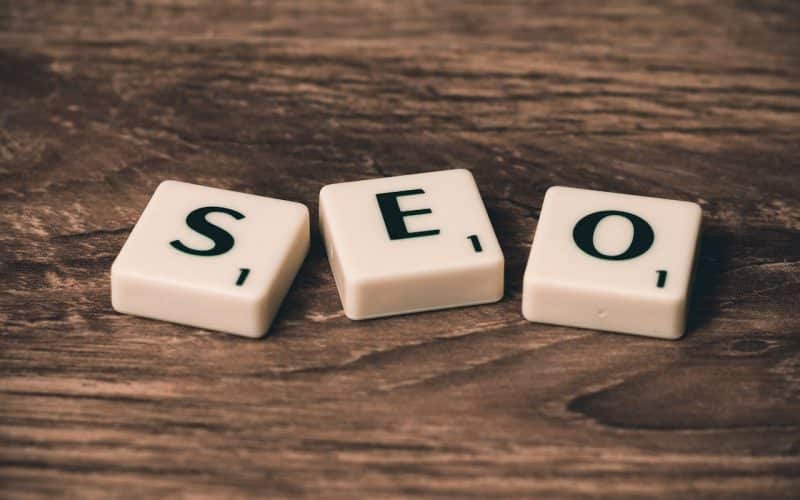Can I leak a secret? I once looked up a definition during a Zoom meeting. One of those marketing jargon was used on me, I lost my cool and I just had to help myself, phew! finally got it off my chest. Whether you are a seasoned marketer or just starting, you might have on one or two occasions noticed that marketers love any kind of jargon — especially acronyms. And I don’t even want to go into full details on how tough it is to keep up with those terminologies. It can be tiring but I got you.
To prevent you from making Google your best friend during your Zoom meetings or even a physical gathering, I have compiled a good list of popular key marketing terms that you should know. Feel free to bookmark this post and come back to it whenever you need to.
Key Points
- Understanding marketing terminology is crucial for effective communication and strategy formulation.
- Key terms like “lead,” “B2B,” and “B2C” provide foundational knowledge for targeting and engaging with different audiences.
- Utilizing concepts such as “call to action” and “buyer persona” can significantly enhance the effectiveness of marketing campaigns.
- Metrics like “churn rate” and “bounce rate” help in evaluating and optimizing marketing efforts for better results.
- Familiarity with terms like “native advertising” and “on-page optimization” ensures that marketing practices align with industry standards and best practices.
What is the Need of Knowing These Terms
As a marketer or an aspiring marketer, I will tell you for free, there is nothing worse than being part of a conversation you don’t fully understand. You would witness terms and acronyms like “SEO”, “ROI” and “B2B” being referenced a lot…enough to make your head spin. Now learning about these terms won’t obviously stop your head from spinning, but it will definitely keep you in the loop and help you engage more confidently in a conversation while applying those marketing terms.
These terms may relate directly to a marketing role or have some association with the field. Additionally, these terms can help you understand sales analytics and how to properly connect with consumers, regardless of not being in the marketing industry. So what is it gonna be?
Basic Marketing Terms
Ready to flow during conversations or just any work-related benefits? I’ve broken down this list of marketing terms to guide your path:
#1. Lead
A lead can be known or referred to as a potential customer in any business or enterprise. To generate these leads, you can see companies and organisations set up landing pages, calls to action and numerous tools for the sole purpose of generating leads.
#2. B2B
The acronym B2B simply stands for business-to-business marketing, which in reality means that B2B companies are known for marketing either their products or services to other businesses or companies. In other words, their target audience is a business and they expect these businesses to purchase from them.
#3. B2C
Just like I have stated the meaning of B2B, running a B2C is quite the opposite, and it stands for business-to-consumer marketing. B2C companies specialise in selling or marketing their products and services directly to end consumers.
#4. Call to action (CTA)
Just as the name implies, it is a prompt that persuades or encourages a customer, or website visitor to take a certain action which includes buying a product or service or subscribing to an email newsletter. downloading an ebook or submitting a contact form. If your end consumer carries out that CTA, then they automatically become a potential customer cause they are now presumed to be willing to go through the next step in a sales funnel. Am I making any sense?
#5. Buyer persona

Before a marketer chooses to design an ad with the intention of putting it out there, they usually have imaginary people that are being tailored around their target audience, which will in turn enable them to achieve their ad goals. Regardless buyer personas aren’t real people, but they are created based on data from actual consumers, so either way, it works. So whenever you hear this term, just have a swift flashback to this explanation.
#6. Analytics
Analytics can simply be said to be the process of analyzing data to determine the return on investment of a particular marketing activity. In marketing, this term has been overly used on different occasions and whenever it’s been mentioned, it’s always about data. Most times, it can be mentioned when referring to the dashboard or system they use to review the same data.
#7. Brand
As a marketer, the company you work for can be termed a brand. A brand can also be the way a company is perceived and explored by diverse customers. When it comes to a brand, there are different elements that can be used to detect one which include logo, vision, mission, brand colour and the particular voice it uses when addressing its target customers.
#8. Churn rate
This term is very conversant among marketers and it is simply a metric that keeps track of how many customers you retain and at what value. If you want to calculate and measure your churn rate, you can do that by taking the number of customers you lost during a certain time frame and dividing that by the total number of customers you had at the very beginning of that time frame. Remember that while at this, do not include any new sales you had during that time frame. Let me give you some examples of what I mean.
Let’s assume that you own a company that has about 500 customers at the beginning of January, and by the end of January, you have about 450, discounting any customers that were closed in January. If you want to calculate the churn rate in this case, it would be (500-450)/500 =50/500 =10%.
It is quite important to note that at the end of the month if your customer does not stick around long enough, it’s correct to say that you are in a big mess.
#9. Conversion Path
In the marketing sphere, this term can be widely used and it simply is a series of website-based events that helps to improve lead capture. Just like its name states, it usually consists of a call to action that will lead the audience to a landing page using what is known as a lead-capturing form. From there it still goes along to transfer the target audience to a thank you page where a content offer resides.
The customer will have an option to exchange his/her contact information with a content offer which will go a long way in helping through the buying process.
#10. Bounce rate
Bounce rate in marketing is an engagement metric that detects the total number and percentage of website visitors who left the site after viewing only one page. But then you should note that in all cases, having a high bounce rate is not as bad as it seems. You just have to work harder at making sure your visitors stay longer on your site.
#11. Avatar
Don’t worry, this is not the same as the movie, so whenever you hear this under marketing, it is usually referred to as a profile picture on most platforms, an avatar is a small image that represents you on your social media pages. It mustn’t be your picture on it. You can upload a logo or an image that can be relatable to you and your customers.
#12. Monthly unique visitor (MUV)
This term is also under analytics, and it records one unique individual or visitor who visits a site at least once within a given month. One can use this particular term to understand how wide-reaching a page is in terms of the unique clicks it draws, rather than just focusing on the overall number. You can use this term if you want to be more focused.
#13. Clickbait
This marketing term is not so far from its actual meaning. In marketing, it relates to how content creators can create content that is able to manipulate an individual to get them to click a link or press play. This term pays more attention to utilising provocative titles or images that steer the interest of a potential viewer.
#14. Content
This term is quite vast and widely used in and out of the marketing industry. It simply means a piece of information that exists for the purpose of being digested (not literally), engaged with, and shared. They mostly come in diverse formats like blogs, videos, images, social media posts, podcasts or even slideshows. It leads to website traffic, lead conversion and even customer marketing.
#15. Email
Email stands for electronic mail. In the ancient days, we were vastly known for communicating through letters using post offices before they got to the receiver. With the use of email, it’s a lot easier. You can easily type out using your device (laptop or phone) and then forward it to the receiver and it will be delivered to them in seconds.
It’s a core component of marketing because it’s a direct connection to a contact’s inbox. As a marketer, you should avoid abusing this function because it is easy for your target audience to unsubscribe from your emails.
#16. Key Performance Indicator (KPI)
KPIs are a type of performance measurement companies use to evaluate an employee’s or an activity’s success. In the marketing industry, it is widely used to track progress on any outlined marketing goals that need progress in a given time. Also, successful marketers constantly evaluate their performance against industry standard metrics.
Some really big examples of such include CAC (customer acquisition cost), blog traffic sources and homepage views.
#17. Lifecycle Stages
In marketing, there are three popular lifestyle stages and they include, awareness, evaluation, and purchase. These lifestyle stages are good ways to describe the relationship you have with your target audience. Which in the sense means to tailor the contents you dish out according to how it has been listed.
But then, you should know that its not every piece of content you create is appropriate, depending on what stage your audience might fall in at that moment. Dynamic contents in this case are much better cause it does not pay much interest.
#18. Native Advertising
Just as the name implies, this form of online advertising takes on the form and function of the platform it appears on. Its sole function is to make ads feel less like ads and more like a part of the conversation. Native advertising is made to appear as sponsored content that is relative to the customer’s experience. It can either come as a radio announcement or an article on a product.
#19. No-Follow Link
If you are conversant with writing and publishing on websites like WordPress, you must have come across this particular phrase. A no-follow link is been placed when a website does not want to pass search engine authority to another webpage. Just take for example, you came across this article and got invested, as the reading goes on, you come across a link that will transfer you to a different webpage to access the information on it.
If the supposed link comes with a no-follow, then it’s automatically telling you not to follow or pass credit to linked websites as a way to avoid association with spammy content or inadvertently violating webmaster guidelines.
#20. On-Page Optimization
An on-page optimization is a type of SEO that is mainly optimised and infused with keywords on a webpage and other elements of the page. It covers the content, title tag, URL, and image tags, while extensively optimizing the desired keyword that will help the page rank for those keywords.
#21. Off-Page Optimization
This is the opposite version of an on-page optimization. It covers the incoming links and other outside factors that impact how a webpage is indexed in search results. To get the best out of this type of SEO, it is advisable to create useful and value-filled content and you won’t worry about it being viewed or not because its chances are quite high.
#22. Likert scale
This marketing term is simply a question-like format that is been used for marketing surveys to enable marketers to gauge the intensity of a sentiment via a numbered scale, a Likert scale often ranges from “1. disagree” to “5. Strongly disagree.” You can notice this format is mostly used when quantifying sentiment but often needs to be paired with more qualitative questions to understand why a respondent feels this way.
#23. Customer segmentation
Just as its name implies yet again, a customer segmentation process is usually carried out to break down various groups/categories of customers based on their needs, spending and specific demographics.
#24. Page view
By going through a page view, the marketer is usually trying to analyse a website and observe if there are any visible changes on the webpage and also if there are more or fewer page views.
#25. Pay-per-click
PPC or pay-per-click is the total amount of money being spent to get an ad clicked by a target audience. It can also be known as an internet advertising model where an advertiser gets to pay a publisher a certain amount of money every time their ad is clicked.
To deepen your understanding of marketing terminology, download our FREE comprehensive glossary checklist below:
Marketing Terminology Glossary Checklist.PDF
Conclusion
I know that some marketing terms we come across look like a foreign language and you are not alone. That is why I have gone out of my comfort to provide you with those popular marketing terms and simplify the meaning for better assimilation.
Related Articles
- How to Boost Your Brand Using E-commerce Marketing Automation: Best Tools and Platforms
- Influencer Marketing KPIs: Best Practices and Tools to Measure Campaigns
- Top 4 Flywheel Marketing Strategies You Need to Know Now
- Integrated Marketing Communication: 5-Step Guide for Integrating Marketing Communication Across Channels
- Top Careers in Digital Marketing: Roles and Responsibilities in 2024






